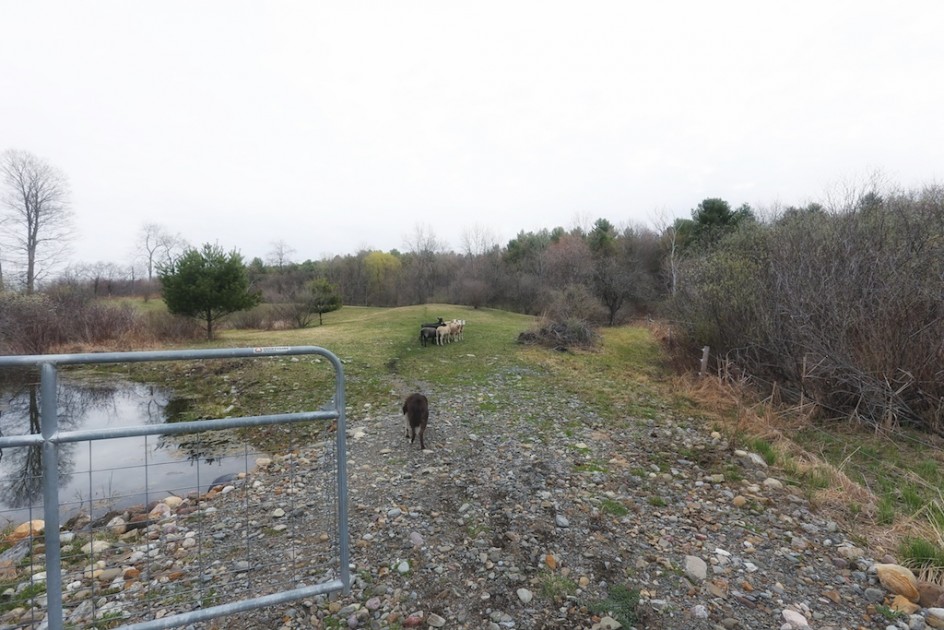
Having a farm is like playing chess in a way, you must always be thinking ahead and trying to anticipate lots of things, many of which you can’t control. This week, the weather finally turned to Spring, temperatures in the 60’s, some rain, some snow. Even the farmers can’t squawk about Spring so far. In a few weeks we are getting a pony Chloe is coming to the farm, and some green grass is finally beginning to emerge.
So we have plotted our grass conversation and rotational grazing strategy for the summer of 2015. We have about nine or ten acres with grass in varying degrees. We will have three equines (a pony and two donkeys), seven sheep who need grass, and if manage it well, we won’t have to buy hay or feed the animals hay until late October.
Rotational grazing is, for me, one of the fun challenges of having a farm with animals. There is intimacy in understanding grazing, you get to know the animals and the farm intimately. Maria and I did a walking tour this morning to check things out.
Each species of animal is different. Sheep eat low, goats and donkeys eat high. Ponies and horses have to be monitored, they can eat themselves sick. Donkeys won’t. The idea is for animals to graze twice a day until their bellies are reasonably, and the rest of the day they need to be in corrals or pastures that are fenced. Our best grass is on the Southern side of the house, in the fenced-in area where Red and I work with the sheep.
Grass that is walked on and grazed all day will become damaged, the roots ripped up or ground down or torn out. Horses that overeat – especially ponies – can founder. Donkeys are close to indestructible, they will eat almost anything green and rarely get sick. Sheep are also hardy, but they can get fat and dopey and will overeat.
So our grazing strategy is underway. We will fully implement it when we get back from Iowa next week. We have sealed off three areas of the pasture. We put an electrified fence on the pasture by the Southern side of house, closed the gates on the pasture on the northern side, and closed the gates on Lulu’s crossing, the old cow pasture behind a few hundred yards behind the Pole Barn. There is a three or four acre center area right behind the farmhouse where the animals will be held. We will let them in one of the protected pastures for three hours in the morning, and three hours at night.
Red and I can take them out back as the shepherds do when they go looking for grass with their dogs in Ireland. Red might have done it there. The idea is to think of each of these contained pastures as grazing fields, each of them managed carefully. When one is grazed down, we’ll close it off for a month. Soon there will be no grass in the holding area.
The tricky time of year is August and September. If the summer is dry and hot, the grass will be almost shot by then, and we will have to look for hay early. That would be both sad and expensive. If the weather is good and we manage the grazing, we should be fine through September at least.
We’ll see how Chloe grazes when she gets here, ponies are prone to foundering, so we have to watch her. Rocky, the blind pony we inherited, grazed outside for 15 years, he stayed healthy all of that time. I love plotting out all of this stuff, there is nothing like a farm to focus the distracted, to give structure to one’s life.
